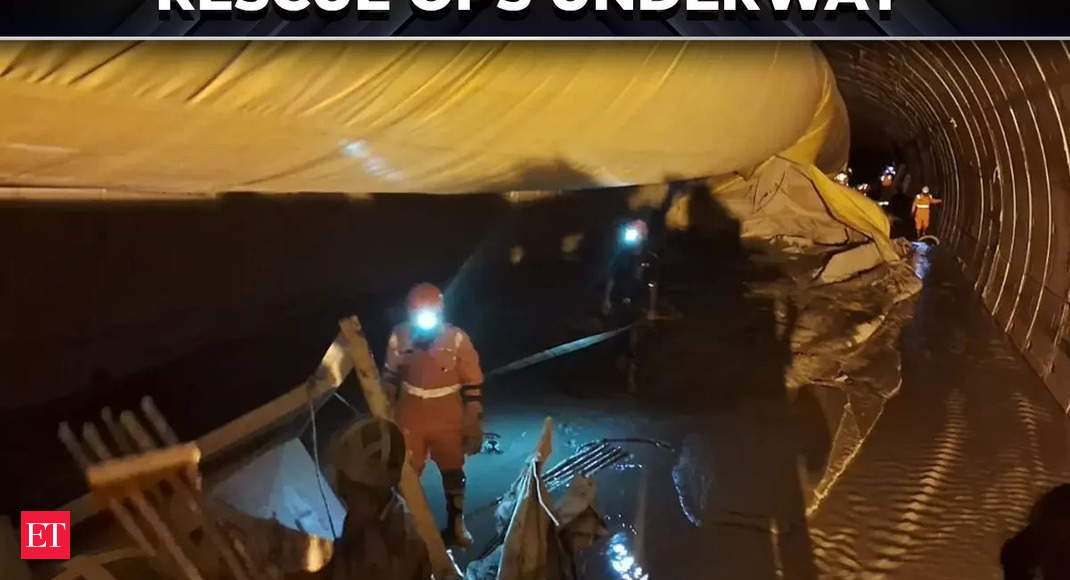After a 17-day effort by Indian agencies and international experts, 41 workers trapped in an under-construction tunnel in the Himalayas have been rescued. On Tuesday evening, the workers crawled out of a passageway dug through the rubble that separated them from the outside world. Their family members greeted them with hugs and tears before an ambulance whisked the workers away. Many of them had traveled many miles and camped outside the tunnel through the course of the operation. The workers were hired by a Hyderabad-based engineering firm contracted by the Indian government to construct the 2.8-mile tunnel at Silkyara, a remote village at the foothills of the Himalayas. On Nov. 12, a landslide collapsed a portion of the tunnel, trapping the workers behind nearly 200 feet of rubble. Within days, the rescuers had inserted a 6-inch pipe and established communication with the workers. This pipe was used to supply food, medicines and other essentials on the other side. Family members would use it to speak to them once a day to help raise their spirits. Simultaneously, the rescuers tried to drill through the debris and insert bigger pipes that the workers could crawl through. This operation had to be stopped several times after rocks, stones and metal inside the debris brought drilling machines to a halt. On Monday, a team of ‘rathole miners’ were sent in and asked to dig through the remaining 40 feet. The miners, who specialize in extracting coal by digging narrow tunnels inside mountains, managed a breakthrough in just over a day. The Silkyara tunnel is part an ambitious road network begun by India’s Hindu nationalist government. It has two main goals: connecting four Hindu shrines in the Himalayas and creating an all-weather access for the Indian military to reach the border with China. But environmentalists have been critical of the plan. They say this area is prone to landslides, earthquakes and floods, and that heavy roadworks could trigger more disasters. ‘This [accident] likely happened due to carelessness,’ said Pramod Nawani, former director of the Geological Survey of India. ‘The place that collapsed is a weak rock mass. When they worked in the area, they should’ve used [a] proper support system, like the rock bolt, lattice girder or concrete [to hold the rocks together]. If there was a collapse, it means the support system wasn’t there.’ In a video statement, India’s minister of road transport, Nitin Gadkari, admitted that there were lessons to be learned from the accident. ‘We’re going to conduct a safety audit of the tunnel now,’ he said. But no matter what the audit findings reveal, infrastructure projects in the Himalayas are unlikely to stop. ‘It’s difficult to work in the Himalayas,’ said Gadkari. ‘But we’ll have to find a way to work around it.’









